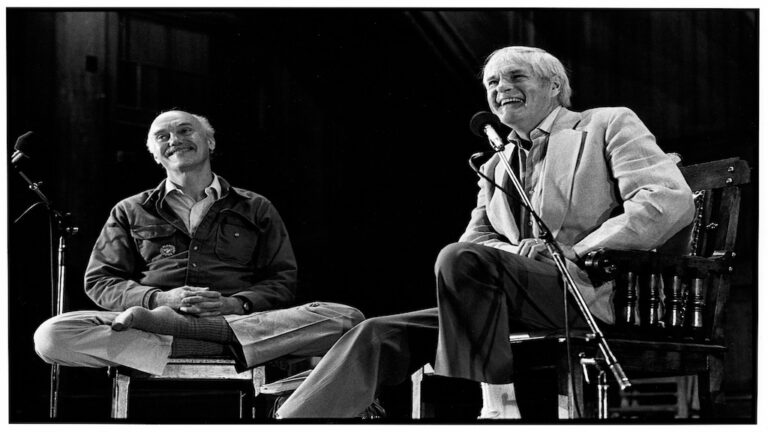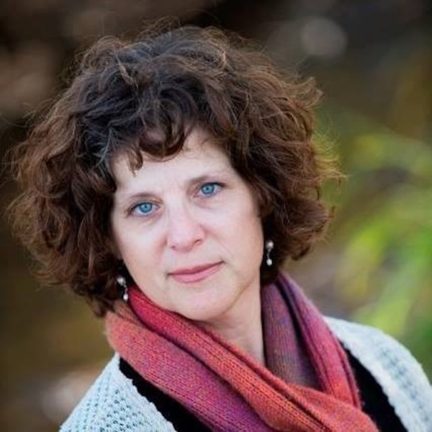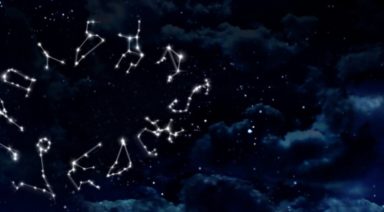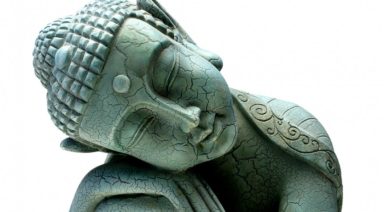Ram Dass and Timothy Leary; A Friendship Beyond Space and Time

Friendships can be slippery things, often dependent on a particular time and place. But in the case of cultural icons Timothy Leary and Ram Dass, their friendship, while grounded very much in the times, also reached beyond them and influenced an entire generation of seekers.
“Dying to Know” explores Leary and Ram Dass’s long and complicated relationship, from their shared passion for pushing against societal norms to their ground-breaking work in understanding consciousness, and even how we approach our own death. Their friendship was one of the most influential and important, of our times.
From Very Different Beginnings
While both men were born in Massachusetts, their childhoods were very different. Leary, an only child, stemmed from a mix of Irish backgrounds with his mother being extremely conservative and his father, a wilder, drinking, roving type. As a child, Leary loved reading, drawn to stories of adventure and heroism.
Leary’s paternal grandfather advised him to follow his own path and to be “one of a kind.” This advice led him to challenge authority. In his college years, he would leave West Point after a dismissed court-martial charge for supplying alcohol to other cadets, then taking on the persona of the provocateur.
Ram Dass, aka Richard Alpert, was the son of a railroad president and founder of Brandeis University, growing up in a stable, middle-class Jewish family. Alpert graduated from Wesleyan University, then Stanford, where he served as faculty, as well as at the University of California, Berkeley. At 27 years old, he was appointed as an assistant professor to Harvard’s psychology department in 1958; Alpert was a rising success. But he was living a lie as a closeted homosexual. The cost of this secret, according to Alpert, “set the stage for feeling like an outcast.”
Leary also experienced early success in the academic world. His first book, The Interpersonal Diagnosis of Personality, was named “book of the year” in 1957 by the American Psychological Association and he was on the faculty at the University of California, Berkeley where he’d received his doctorate in psychology. Despite this academic success, his personal life was troubled. His first marriage ended tragically with his wife’s suicide, leaving Leary to raise their two children on his own.
Haunted by her death, Leary and his children moved to Florence, Italy, where he met David McClellan, the director of Harvard’s Center for Personality Research, who was so impressed by Leary’s original ideas on psychology, he offered him a three-year research project where Leary and Alpert’s paths would cosmically converge.
That same summer was also the first time Leary tried psychedelic mushrooms while traveling in Mexico, an experience in which Leary said he “learned more about his mind in four hours than he had in his 15 years as a psychologist.”
Kindred Consciousness
Leary focused his research efforts on the effects of psilocybin, at that time a legal substance obtained through Sandoz Pharmaceuticals. Trained staff members took the drug and acted as guides for the volunteers in an approach that became known as “set and setting.” When Leary arrived at Harvard, Alpert was drawn to Leary’s sense of personal and academic freedom, as well as his outlandish sense of humor.
Alpert saw his new friend as a visionary and believed Leary’s ability to “see outside the system” would allow Alpert to finally break free. With Leary’s guidance, Alpert tried synthetic psilocybin, the active ingredient in “magic” mushrooms. It was a profound experience that stripped him of his false identities.
In 1962, Leary’s research headed in a new direction with the introduction of LSD. At first, Leary was reluctant to expand his research, but after he explored the drug on his own, he changed his mind and the course of the project. Leary, and his research team, felt that the controlled use of LSD could free people to release themselves from the strict confines of society’s norms into a fuller existence. At a time when outer space was being aggressively explored, Leary and Alpert thought of themselves as inner cosmic adventurers or psychonauts.
At the height of the project, Alpert broke the rule regarding only graduate students being used as subjects leading to him being fired from Harvard while bringing national attention to psychedelics. Leary’s contract with Harvard was not renewed, as he and Alpert found a new way to continue their work.
The two resettled in Millbrook, New York on the expansive property of one of their subjects where they set up a new research site and a communal living environment known as Millbrook, and a second home to many of that era’s artists, thinkers, beat poets, and activists.
Turn On, Tune In, Drop Out
At Millbrook, Alpert became “the support system for Timothy’s (revolutionary) vision,” efforts that ranged from raising money to housekeeping to substitute parenting — whatever was needed to keep the enterprise afloat. This came at a huge financial and psychological cost, as well as straining their friendship. Alpert found himself in the position of having to break free from Leary, leaving Millbrook in 1965 to embark on his own spiritual quest.
During this time, Leary married a second time and divorced, then got married for a third time to Rosemary Woodruff. Leary headed to Mexico with his children, and upon their return, Woodruff was found in possession of a small amount of cannabis. Taking responsibility, Leary was sentenced to more than 30 years in prison, which was later reduced to a charge of interstate transportation.
For a generation of youth yearning to break free from the strict social confines of the 1950s, LSD represented the keys to that freedom. Leary had been an early proponent of legalizing drugs for adults with stringent license requirements, even being called before Congress to testify on the subject. He believed the criminalization of these substances was directly in correlation to the availability of them. He was right — LSD became the drug of choice for the younger generation and Leary’s words, “Turn on, tune in, drop out,” its rallying cry.
Named by President Nixon as America’s “most dangerous man,” Leary was arrested again in 1970 and sentenced to a minimum-security facility for 10 years. He escaped jail and embarked on a fugitive’s life with his fourth wife, culminating in his capture in Afghanistan where he was then returned to prison for four years, including two in solitary confinement.
Desperate to get out of jail, Leary turned to state and federal evidence; he and his wife were put into the witness protection program under the names James and Nora Joyce and relocated to Santa Fe, New Mexico. The relationship soon ended, already under intense strain due to drug abuse, alcoholism, and estrangement.
During this tumultuous period in Leary’s life, Alpert was on a very different journey. Traveling in India, he encountered Neem Karoli Baba, also known as Maharaj-ji by his followers. He became Alpert’s guru and gave him the spiritual name, Ram Dass.
After an intensive period of studying yoga and meditation, Ram Dass returned to the United States a very changed man. He wrote about his experience in Be Here Now, one of the best-selling spiritual books of all time and considered many a spiritual seeker’s manual. Ram Dass emerged as a bridge between East and West, opening a new world of spiritual awakening to a generation hungry for ways to train and calm the mind.
A New Stage of Life and Friendship
The two men’s lives took very different paths, but it was through their personal encounter with their own mortality that a new connection was formed. For both, the illness became another opportunity to engage in the greatest mythical experience of all: death.
When Leary was diagnosed with advanced and inoperable prostate cancer in 1995, he turned to his old friend Ram Dass for support, wisdom, and guidance. Two decades before, Ram Dass established the Dying Project (with Stephen and Andrea Levine, and Dale Borglum) and was considered a pioneer in the field of conscious dying and hospice care. As with his life, Leary applied the same bravado to his cancer, which Ram Dass describes as a “theater piece, a poem, a dance…(it) was a celebratory moment.”
Leary died May 31, 1996. In speaking about Leary’s death, Ram Dass said, “Timothy and I are explorers, we’re beloveds, we’re deeply connected and I can’t imagine that will ever change.”
In 1997, Ram Dass experienced a stroke that left him with expressive aphasia and a massive cerebral hemorrhage, leaving him with what doctors predicted as a 10% chance of survival. He viewed this health challenge as an act of grace and spiritual practice, continuing to write, teach, and live with what Joan Halifax called a “delightful determination that is a model to us all.” Ram Dass died 23 years after his friend, also surrounded by loving friends and family.
From the spark that lit their friendship at Harvard, Dying to Know lovingly relates the story of a friendship that transcended time, space, culture, and for Leary and Ram Dass, their own physical realms. Their friendship did change the world, but it was also centered on the most important thing – love; a wild and crazy love that lasted a lifetime.
2026: A New World - The Year of Great Beginnings

Table of Contents
- The Fire Horse (Chinese Astrology)
- Key Planetary Alignments of 2026: The Celestial Forces
- January 2026: Decisions and Closures (Venus Star Point in Capricorn)
- February – March: The Digital Revolution (Eclipses in Aquarius and Virgo)
- The Historic Conjunction: Saturn and Neptune at 0 Degrees in Aries (February 20th)
- Uranus in Gemini: The Revolution of the Mind (Beginning April 26th)
- Jupiter in Leo: The Awakening of the Heart (Beginning June 30th)
- August: The Total Solar Eclipse in Leo (August 12th)
- Venus Retrograde in Scorpio (October-November)
- Preparing for 2026: A Quarterly Guide
- Final Advice: Being Human
This article is presented as an initiation to enter the great portal of 2026, which will be remembered as the year of great beginnings.
2026 is identified as a collective turning point, a quantum leap in human consciousness, and spiritual and technological revolution that will usher in a new generation. It will be a year of radical innovation, inevitable change, and a peace that will make it impossible to go back to the way things were.
The year 2026 is year 1 in numerology (2+0+2+6=1), the year of the seed, of destiny, and of a new karmic cycle.
2025 was the Year of the Snake, a year that bridged and created a threshold between two worlds. The Virgo-Pisces eclipses forced us to shed our skin and release our burdens, stripping humanity of the unnecessary.
The Fire Horse (Chinese Astrology)
In Chinese astrology, 2026 is the Year of The Fire Horse, which officially begins on February 17th. This archetype demands movement, decision, freedom and courage, and favors those who dare to gallop into the unknown.
Key Planetary Alignments of 2026: The Celestial Forces
2026 arrives with unprecedented force, marked by significant lineups.
January 2026: Decisions and Closures (Venus Star Point in Capricorn)
The year begins with the Venus Star Point on January 6 in Capricorn, accompanied by Mars. The conjunction marks the culmination and final resolution process (relationships, partners, and projects) that have been developing since January 2022.
- January is a month of reckoning: what was half built is completed, and what no longer served its purpose dissolves.
- The exact opposition to Jupiter on January 10th amplifies this climax, illuminating what must move forward.
- The New Moon in Capricorn on January 18th opens the door to the first eclipse season and acts as a fruitful void for redesigning the system from the ground up, demanding maturity and autonomy.
February – March: The Digital Revolution (Eclipses in Aquarius and Virgo)
The first eclipse season will set the technological and social tone for 2026. It will be the strongest of the year.
- The Annular Solar Eclipse in Aquarius (February 17th): The first eclipse in this series in over 18 years, it signals the end of technological codependency, the collapse of digital systems, and a collective reflection on social media and AI. This cycle will last until 2028 and will drive advancements in AI, robotics, and astronomical discoveries.
- The Total Lunar Eclipse in Virgo (March 3rd): Echoing the March 2025 eclipse, it reshapes how we work, care for our bodies, and organize our lives. It eliminates outdated routines and ushers in new technologies, automations, and the potential use of robots in service.
- Consequences: Solar events and geomagnetic storms may necessitate upgrades to energy infrastructure, leading to a search for new electricity sources in the face of a possible temporary digital collapse.
The Historic Conjunction: Saturn and Neptune at 0 Degrees in Aries (February 20th)
In the midst of eclipse season, the conjunction of Saturn and Neptune occurs at 0 degrees in Aires. This is the beginning of the zodiac, the earliest spark of creation.

-
Archetypal Meaning:
Saturn represents form, laws, and the tangible. Neptune represents mystery, dissolution, the collective unconscious, and the spiritual.
-
Global Impact:
The conjunction of these planets brings about the dissolution of structures and the birth of new ones. It causes the fall of walls, the collapse of political systems, and a wave of spirituality and consciousness.
-
Historical Examples:
- 1989 (Conjunction in Capricorn): Fall of the Berlin Wall and end of the Soviet bloc.
- 1953 (Conjunction in Libra): Death of Stalin, reconfiguration of the URSS, and the birth of peace movements.
- 1917 (Conjunction in Leo): The Russian Revolution and the irreversible collapse of the Tsarist order.
-
Zero Degrees in Aries:
This conjunction has never before occurred at zero degrees in Aries. This marks a complete reset of the world, where reality becomes malleable and the rules are rewritten. Digital, ideological, and political walls will fall, ushering in an unprecedented spiritual renaissance.
-
The New Leadership:
A leadership based on purpose and vision will emerge, seeking to unite science and spirituality, technology and ethics. Saturn will give form to the invisible, and Neptune will restore soul to the material.
-
Historical Context:
The last time the conjunction was in Aries was around 1522, during the Renaissance, which marked the transition from the Middle Ages to the modern worldview. In 2026, humanity will leave the digital age as we know it and enter a new era of planetary consciousness.
Uranus in Gemini: The Revolution of the Mind (Beginning April 26th)
Uranus enters Gemini on April 26th and will remain there until 2033.

-
Impact:
This accelerates everything: communication, information, technological networks, and breaks down mental paradigms. This combination of the human mind (Gemini) and lightning (Uranus) awakens new connections and ways of learning at an unprecedented pace.
-
Examples (1941-1949):
The last period coincided with World War II, the invention of radar, the first computers, and the initial steps toward the internet.
-
Present Day:
It won’t bring the same wartime context, but it will bring an equivalent revolution on the mental, technological, and communicational levels. New AI, new forms of transportation, and augmented realities are expected.
-
Grand Air Trine:
Uranus in Gemini is amplified by Pluto in Aquarius, creating a grand air trine. This will mobilize an unprecedented energy of innovation, intelligence, and cooperation.
-
Purpose:
To prepare the human mind for the quantum leap and the prelude to a more awakened and free humanity. The need for cleaner air will also become evident.
Jupiter in Leo: The Awakening of the Heart (Beginning June 30th)
Jupiter enters Leo on June 30th.
-
Impact:
It ignites hearts, expands creative desire, and brings a new wave of leadership, expression, and confidence. It will herald new cultural, artistic, and social trends.
-
Examples (2014-2015):
It coincided with the boom of visual social media, the rise of young figures to fame, and the culture of self-affirmation.
-
Current Events:
Jupiter in Leo will act as a spotlight, highlighting who leads, who creates, and who inspires. Changes will be seen in monarchies, along with the rise of younger, more charismatic leaders. Collective romantic drama and new ways of loving will also take center stage.
Fire Moments Highlights:
-
Opposition to Pluto in Aquarius:
It creates tension between the individual (Leo) and the collective (Aquarius), potentially leading to power struggles and major revelations about public figures.
-
Grand Fire Trine (July):
Jupiter in Leo, and Saturn and Neptune in Aries. This is a visionary and creative portal, destined to launch artistic, philosophical, spiritual, or technological movements that will define the coming years.
August: The Total Solar Eclipse in Leo (August 12th)
The second eclipse season begins on July 14th, culminating in a total solar eclipse in Leo on August 12th. Visible in Europe, it will be one of the most significant astronomical events of the decade.

-
Historical Significance:
In ancient times, a total eclipse in Leo (the sign of the king) was interpreted as an omen for the monarch (crisis, overthrow, succession).
-
Current Events:
It marks the end of an era, the fall of a highly influential public figure, and the birth of a new narrative of global leadership.
-
Key Players:
Jupiter in Leo and Pluto in Aquarius create tensions that signal a structural shift in power systems, monarchies, and governments. It suggests the end of a dynasty (symbolic or literal) and the arrival of a new generation of leaders.
-
Karmic Closure (August 28th):
The last eclipse of the year is a partial lunar eclipse, which acts as the emotional, energetic, and karmic closure of everything experienced since 2024. It marks the final resolution of breakups, moves, career transformations, or psychological crises that began in the fall of 2024 and 2025.
Venus Retrograde in Scorpio (October-November)
Venus retrograde in Scorpio is one of the most powerful events of the last quarter.
-
4-Year Cycle:
This transition culminates an emotional and financial story that began at the Venus Star Point in October 2022.
-
Key Dates:
The exact retrograde phase is from October 3 to November 14, 2026. Venus and Mercury will be retrograde at the same time, similar to March 2025.
-
Intensity in Scorpio:
Scorpio rules shared money, secrets, and emotional power. You will see the collapse of unsustainable relationships, revelations that shatter old dynamics, and profound reconciliations. Venus in Scorpio cleanses thoroughly and leaves nothing hidden.
-
Rebirth:
As the old falls away, strong and intense bonds will emerge, bringing you closer to your destiny. The process culminates around December 12th, leaving a sense of emotional, financial, and spiritual rebirth.
Preparing for 2026: A Quarterly Guide
First Quarter: Self-Knowledge and Mind (January-March)
-
Focus:
Self-Knowledge and Self-Analysis.
-
Energy:
The Saturn-Neptune conjunction in Aries and the eclipse in Aquarius enhance the “I Am” and mental capacities.
-
Reccomendations:
- Self-affirmation meditations and mental reprogramming.
- Check out Rewired with Joe Dispenza or Self-Love Yoga with Koya Webb.
- Tools such as astrology or family trees to explore life patterns.
- Get started with Astrology 101 on Gaia.
- Self-affirmation meditations and mental reprogramming.
Second Quarter: Awareness and Abilities (April-June)
-
Focus:
Awakening the mind and abilities.
-
Energy:
Uranus’s entry into Gemini activates air energy and the upper chakras.
-
Recommendations:
- Channeling practices.
- Dive into Channeling: A Bridge to the Beyond.
- Awakening the pineal gland, telepathy, or telekinesis.
- Watch Who We Are about transcending the physical.
- Channeling practices.
Third Quarter: Love and Compassion (July-September)
-
Focus
Cultivating love, compassion and reconnecting with relationships that have become stagnant.
-
Energy:
Jupiter’s entry into Leo and the shift of the nodal axis to Leo-Aquarius.
-
Recommendations:
- Use of high-vibration stones to activate energy centers.
- Watch Mystery Teachings with Sarah Elkhaldy.
- Yoga to open the chest and support the expansion of the heart.
- Practice Open Heart with Tiffany Bush.
- Use of high-vibration stones to activate energy centers.
Fourth Quarter: Detachment and Depth (October-December)
-
Focus:
Invest in wisdom that reveals the shadow and the path to enlightenment.
-
Energy:
Venus retrograde in Scorpio.
-
Recommendations:
- Practices of conscious detachment and working with symbolic death and impermanence.
- Listen to The Art of Letting Go meditation series.
- Drawing on the energy of Scorpio’s water element to work with emotions and memories.
- Watch the popular documentary Heal.
- Feeling and practicing hypersensitivity.
- Watch Sensitive is the New Strong from Gaia’s Emersion Conference.
- Practices of conscious detachment and working with symbolic death and impermanence.
Final Advice: Being Human
2026 will test the “robots” and reward the “human” who creates with awareness. The advice is to be loving, compassionate, and act with kindness and awareness that others help us see parts of ourselves that we cannot see alone.







